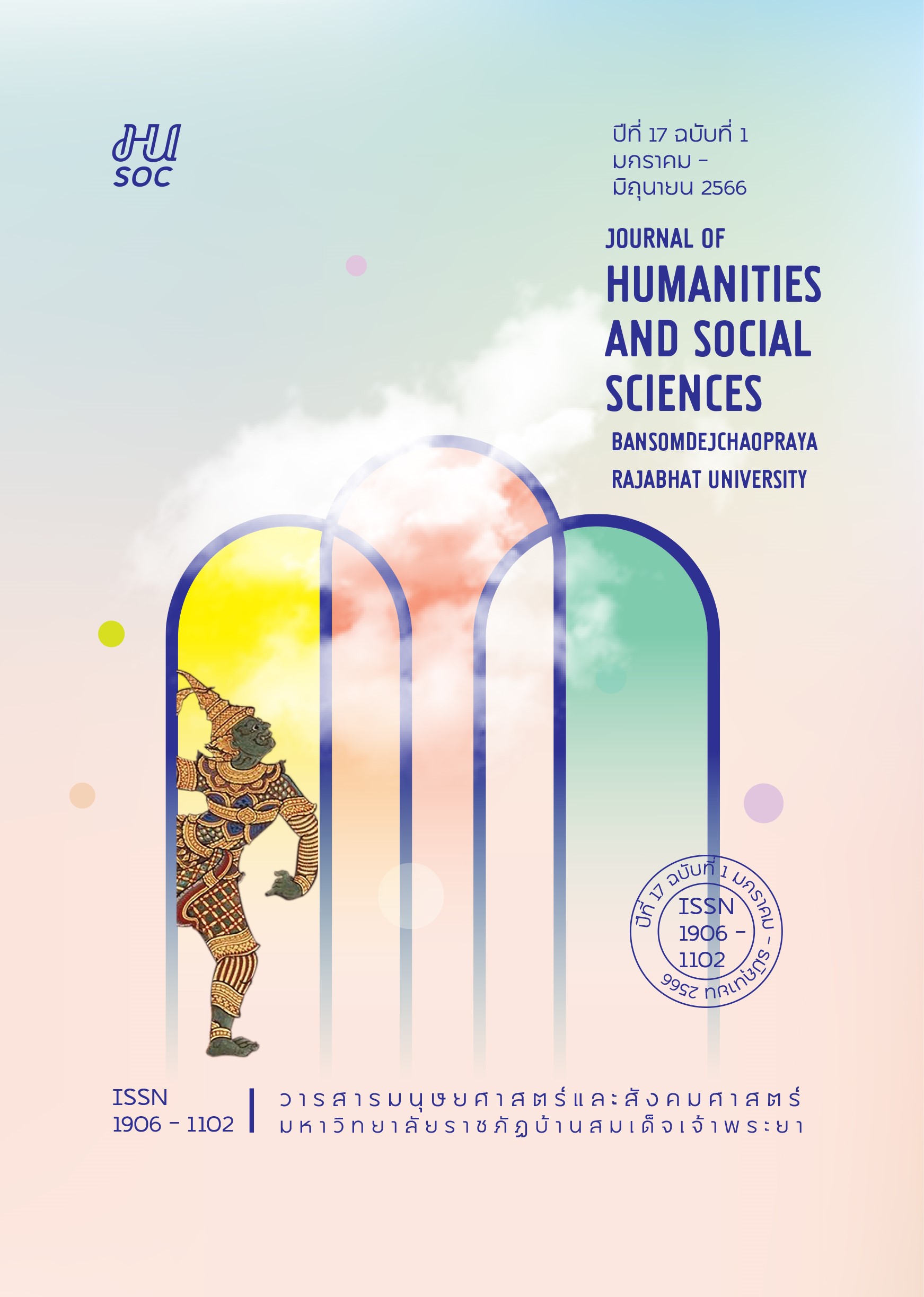The Creation of Thai Dance Therapy to Improve the Quality of Life for the Elderly
Keywords:
Thai Dance Therapy, The Elderly, Quality of Life, Thai Classical Dance, Thai Traditional LoinclothAbstract
The creation of Thai dance therapy to improve the quality of life for the elderly is the study to explore, develop, and perform the shows, aiming to be the guideline for improving the quality of life for the elderly. The research was divided into 2 phases: a survey of the quality of life of 50 elderly people using Thai-version of WHOQOL-BREF in assessing the quality of life. The results showed that the quality of life of the elderly in terms of the environment, physical health, psychological health, and social relations was at a moderate level. The researchers then reviewed the literature and conducted participatory observations among the elderly to create a Thai dance therapy program. The key elements of the program were songs, dance movements, and the show accessories. However, the Thai traditional loincloth was applied in this program to be in line with the elderly’s context. In this project, the pilot study and interview of six elderly people found that their level of satisfaction was the highest because the Thai dance therapy program was developed with their participation and was consistent with the basic needs of the elderly in the region. Moreover, the elderly gained self-esteem through their participation in the development of programs to be guidelines in the physical and mental health care of the elderly and maximize their quality of life in all dimensions. In addition, it is considered an idea to develop Thai classical dance to preserve the culture and local tradition and create new performances to be promoted in the community and society.
References
ดวงจิตต์ นะนักวัฒน์. (2550). ปัจจัยที่มีต่อความสัมพันธ์ต่อการดูแลตนเองของผู้สูงอายุ กรณีศึกษาตำบลม่วงคำ อำเภอพาน จังหวัดเชียงราย. กรุงเทพฯ: สถาบันบัณฑิตพัฒนบริหารศาสตร์.
มานพ วิสุทธิแพทย์. (2556). ทฤษฎีการวิเคราะห์เพลงไทย. กรุงเทพฯ: สันติศิริการพิมพ์.
พิณธร ปรัชญานุสรณ์. (2548). ผลของนาฏกรรมบําบัดต่อคุณภาพการนอนหลับของผู้สูงอายุในชมรมผู้สูงอายุ. [วิทยานิพนธ์วิทยาศาสตร์มหาบัณฑิต, จุฬาลงกรณ์มหาวิทยาลัย].
สุวิมล ทาริวงศ์ และคณะ. (2564, กรกฎาคม – ธันวาคม). การพัฒนารูปแบบการส่งเสริมคุณภาพชีวิตผู้สูงอายุด้ายการรำวงย้อนยุค. ว.วิชาการมนุษยศาสตร์และสังคมศาสตร์ มหาวิทยาลัยราชภัฏอุตรดิตถ์. 8(2), 49-67.
สุวัฒน์ มหัตนิรันดร์กุล และคณะ. (2540). เปรียบเทียบแบบวัดคุณภาพชีวิตขององค์การอนามัยโลกทุก 100 ตัวชี้วัด และ 26 ตัวชี้วัด. เชียงใหม่: โรงพยาบาลสวนปรุง.
สุรเดช ดวงทิพย์สิริกุล และคณะ. (2556). “รายงานการสำรวจสุขภาวะผู้สูงอายุไทย ปี 2556 ภายใต้แผนงานส่งเสริมสุขภาพผู้สูงอายุและผู้พิการ” กลุ่มอนามัยผู้สูงอายุ สำนักส่งเสริมสุขภาพ กรมอนามัย กระทรวงสาธารณสุข. กรุงเทพฯ: วัชรินทร์ พี.พี.
สำนักงานกองทุนสนับสนุนการสร้างเสริมสุขภาพ. (2563). “ออกกำลังกายบริหารกล้ามเนื้อ”. สืบค้น 22 กันยายน 2564, จาก https://www.thaihealth.or.th/Content/53235-
Motl, R. W., el al. (2001). Measuring enjoyment of physical activity in adolescent girls. American journal of preventive medicine, 21(2), 110-117.
Power M, Hanper A & Bullinger M. (2002). The World Health Organization. WHOQOL-100: tests of the universality of Quality of Life in 15 different cultural groups worldwide. Health Psychology, 18(5), 495-505.
Downloads
Published
How to Cite
Issue
Section
License

This work is licensed under a Creative Commons Attribution-NonCommercial-NoDerivatives 4.0 International License.



